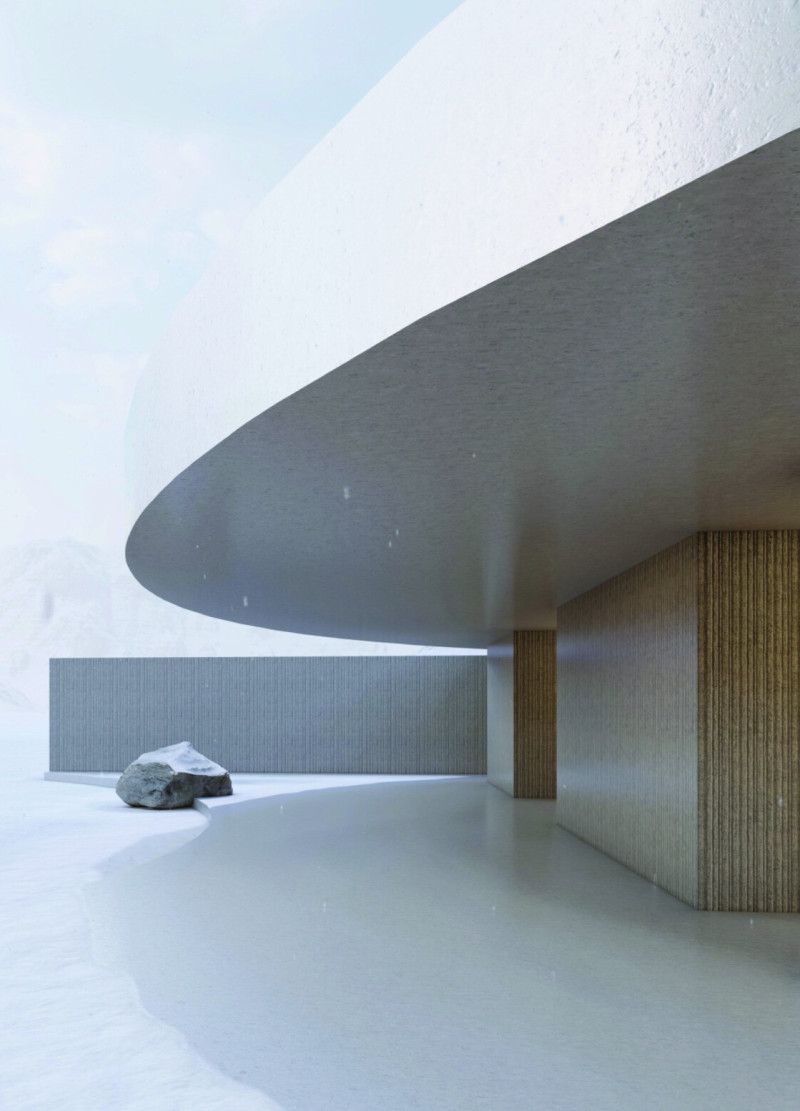5 key facts about this project
At its core, the project represents a blend of aesthetic appeal and practicality. The design carefully considers the needs of its inhabitants, ensuring that each structural element serves a specific purpose while contributing to the overall harmony of the space. The layout is organized to facilitate natural movement and interaction, incorporating transitional areas that encourage users to linger and engage with one another. Importantly, this approach reflects a broader trend in contemporary architecture, which seeks to prioritize user experience along with more traditional considerations of form and function.
The exterior of the building is characterized by a distinctive facade, which not only enhances visual interest but also addresses environmental factors. The choice of materials, including a combination of concrete, glass, and steel, demonstrates a commitment to durability and sustainability while fostering an inviting atmosphere. Large windows allow natural light to flood the interiors, simultaneously offering expansive views of the surroundings and fostering a sense of openness. This thoughtful arrangement enhances the livability of the spaces, allowing for flexibility in their use and facilitating various activities.
Significantly, the project employs innovative design strategies that prioritize environmental sustainability. The use of green roofs and integrated landscaping contributes to improved energy efficiency and biodiversity, creating a micro-ecology that benefits both occupants and local wildlife. Rainwater harvesting systems are incorporated to support irrigation and reduce reliance on municipal water supplies, embodying a responsible approach to resource management. By exploring materials that have low environmental impact and emphasizing energy-efficient design, the architecture sets a benchmark for future projects that aspire to achieve similar sustainability goals.
Attention to cultural context is also evident in the design. The project draws inspiration from local architectural traditions, melding contemporary design elements with features that speak to the history and heritage of the area. This dialogue between old and new not only reinforces the building's identity but also strengthens its connection to the community. The result is a structure that feels both relevant and respectful, echoing the cultural narrative while embracing innovative architectural ideas.
Through strategic spatial planning, the project design accommodates a variety of functions, appealing to a diverse audience. Common areas are designed to facilitate gatherings and events, fostering a sense of community ownership. The careful placement of amenities encourages social interaction, making the building a focal point where community members can come together for leisure, learning, and cultural exchange. Each space within the building is meticulously crafted to allow for flexibility, empowering users to personalize their experience.
In summary, this architectural project serves as a successful model of modern design that harmoniously blends functionality with aesthetic sensibility. Its thoughtful use of materials and innovative sustainability practices set it apart, while the dedication to community engagement ensures it remains relevant and useful for years to come. For those eager to explore the nuances of this design further, I encourage a closer look at the architectural plans, sections, and overall architectural ideas presented, as they reveal the intricacies that contribute to the project's success.


























